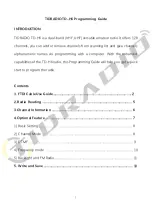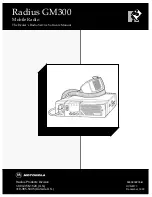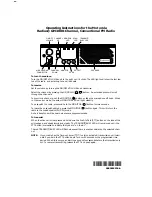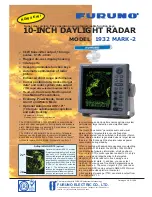
Radar Training System, LabVolt Series
© Festo Didactic
8
•
•
•
•
•
•
•
•
•
Figure 1. Simplified connection diagram of the Basic Radar Training System and
Radar Processor/Display.
The RTM processes the signals from
the Basic Radar Training System to
detect targets, and sends data to the
radar host computer via a high-speed
data link (Ethernet link with TCP/IP
protocol). The RTM can also generate
clutter and interference which are
added to the I- and Q-channel echo
signals from the radar receiver, before
signal processing takes place. The
radar host computer, which runs the
LVRTS software, uses the data
produced by the RTM to display the
detected targets on a PPI display. The
LVRTS software is a Windows
®
-based
application used to download
programs into the DSP memory of the
RTM, to select the type of radar which is implemented (see Figure 2). It also has an intuitive user interface to:
Select the radar processing functions and adjust other parameters of the radar, such as the video gain, detection threshold, etc. (see
Figure 3)
Control the radar display functions such as the PPI display mode selection, Variable Range Marker (VRM), Electronic Bearing Line (EBL),
etc. (see Figure 4)
Display diagrams that show how to connect the equipment (see Figure 5).
Display the functional block diagrams of the complete radar and radar processor/display subsystem (see Figure 6).
Connect virtual probes to test points in the aforementioned block diagrams to observe real signals using the built-in oscilloscope (see
Figure 7).
Use the Data Monitor to observe and analyze the signal processing sequence involved in Moving Target Detection (see Figure 8).
Insert faults in the system (password-protected feature) for troubleshooting purposes (see Figure 9).
Set the parameters that control the generation of clutter and interference (see Figure 10).
Obtain on-line help screens (see Figure 11).
Figure 2. On-screen selection of the type of radar which is implemented.









































